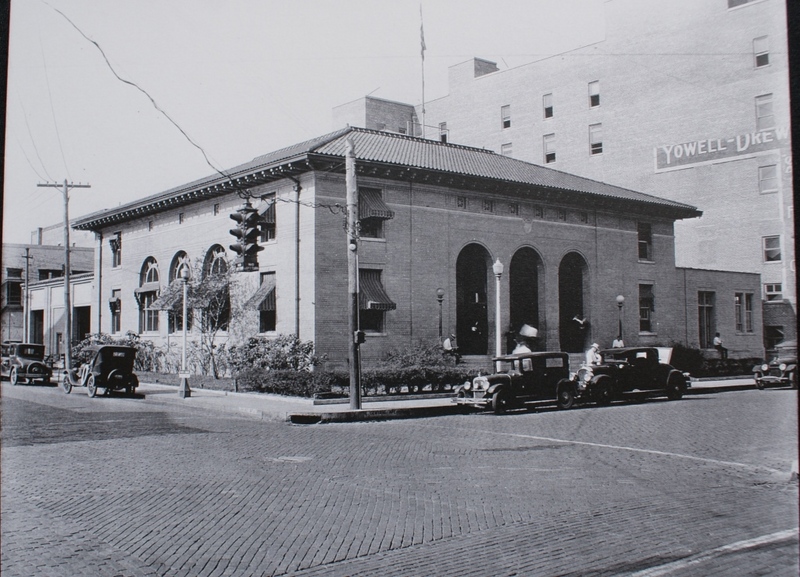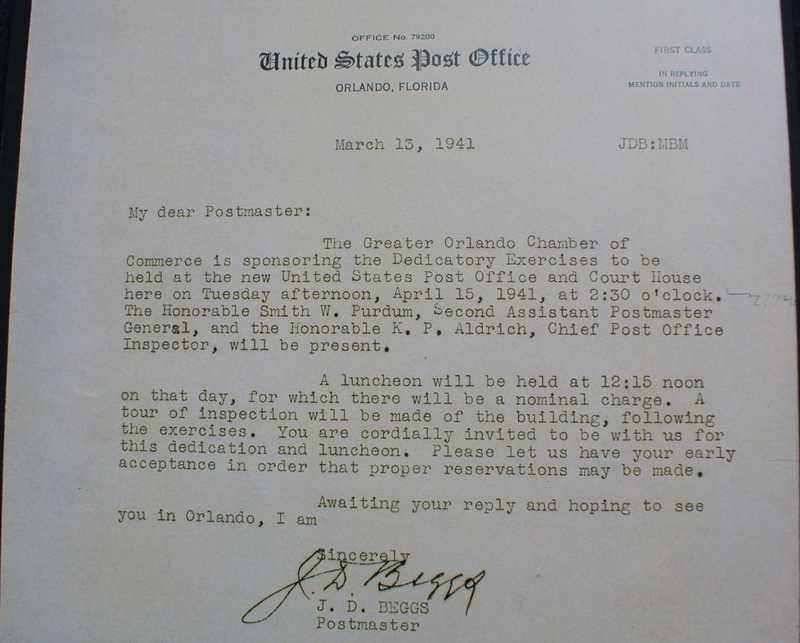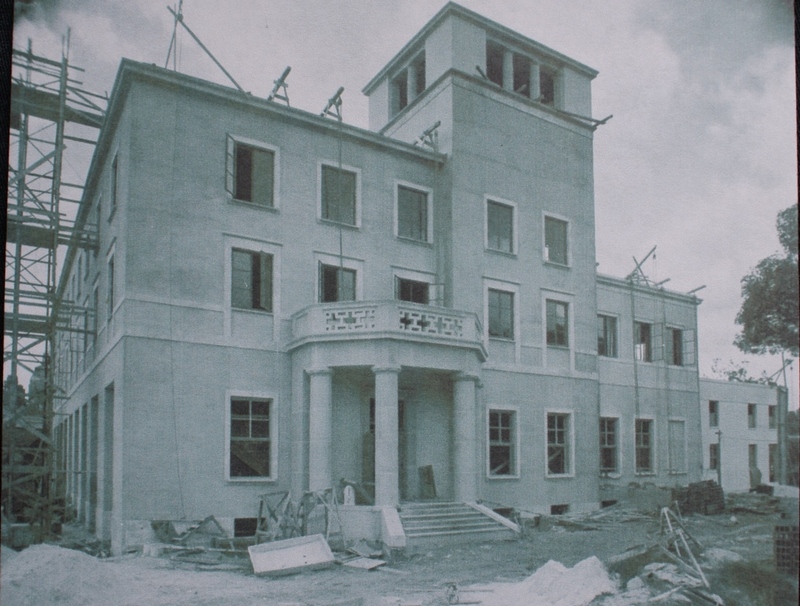A New Building for the New Deal
By the early 1930s, Orlando and the state of Florida were already struggling with a declining economy. Hurricanes in 1926 and 1928 in South Florida plunged the state into economic downturn as the development boom collapsed. A freeze on December 12-13, 1934, while not as devastating as the 1894-1895 freeze was so severe that it led to the creation of the joint Federal and State Frost Warning Service to alert growers to future cold weather. The citrus industry took a hit it could ill afford. When the Great Depression arrived, the “City Beautiful” lost another moneymaker, tourism, as money for travel evaporated. The combination of events prompted city officials to contemplate ways to restore the local economy. They found one opportunity in the post office.
From 1917 until the 1930s, the Orlando Post Office shared space in the Federal Building, a multipurpose structure on the corner of Central Boulevard and Court Avenue. However, the post office had outgrown its facility and needed a new building, one that better fit the needs of the postal service and the community. Orlando’s population had almost tripled between 1920 and 1930, and the post office could no longer keep up with the city’s demands. Building a new post office for Orlando created both a better functioning community center and boosted Orlando’s economy.
In 1935, Orlando officials applied to the federal Works Progress Administration (WPA) for funding to construct a new post office building; approval came in 1936. New Deal building projects used local labor for construction and the wages earned by workers on the project went back into the community’s economy and improved morale. City officials also hoped the new post office would demonstrate the city’s modernity to potential investors.
Land for the new post office was acquired in 1938, but construction did not begin until June of 1940. However, construction moved quickly and the new post office was formally dedicated less than a year later on April 15, 1941. Although construction costs of $700,000 exceeded the original estimate of $600,000, the community viewed the new building as a major addition to the city and evidence of Orlando’s recovery from the depression. Local anticipation of future economic growth may explain the Greater Orlando Chamber of Commerce decision to sponsor the dedication ceremony.
To the right is a form letter from Postmaster J.D. Beggs in which he invites other postmasters to attend the dedication ceremony. It is evident that the event was important for the community. Both Second Assistant Postmaster General Smith W. Purdum and Chieft Post Office Inspector K.P. Aldrich were in attendance. They formally inspected and approved the building for operation. Hundreds of Orlando residents attended the public event to observe the dedication and hear speeches by prominent political figures. A new day in the city’s postal history had arrived.
Bibliography
Bollinger, Heather. "Episode 3: Serving the Community: The New Deal Post Office of Cocoa Florida." RICHES Podcast Documentaries. March 3, 2011. https://richesmi.cah.ucf.edu/omeka2/items/show/2455.
Clark, James C. Orlando Florida: A Brief History. Charleston: The History Press, 2013.
Greater Orlando Chamber of Commerce. "History of Orlando Post Office Promotion - Greater Orlando Chamber of Commerce, 1941." Orlando Memory. Accessed October 14, 2015. http://dc.ocls.info/memory/image/history-orlando-post-office-promotion-greater-orlando-chamber-commerce-1941.
"Orlando Post Office Formally Dedicated in Solemn Ceremony." The Orlando Morning Sentinel. April 16, 1941. http://dc.ocls.info/memory/image/federal-building-and-post-office-dedication-april-15-1941-0 .
Rajtar, Steve. A Guide to Historic Orlando. Charleston, SC: History Press, 2006.
Velásquez, Daniel. "A History of Central Florida, Episode 48: Electronic Communication." RICHES Podcast Documentaries. https://richesmi.cah.ucf.edu/omeka2/items/show/5410.


